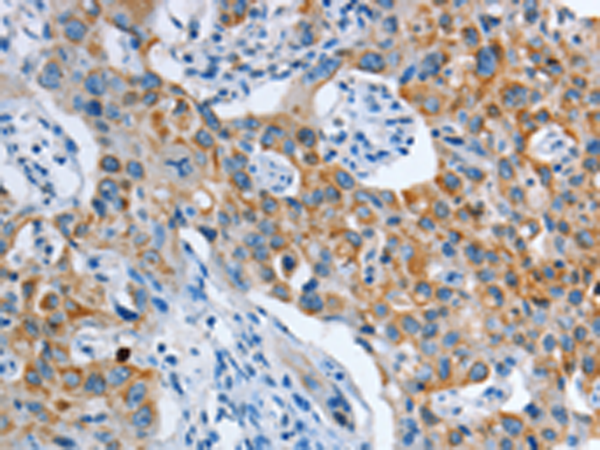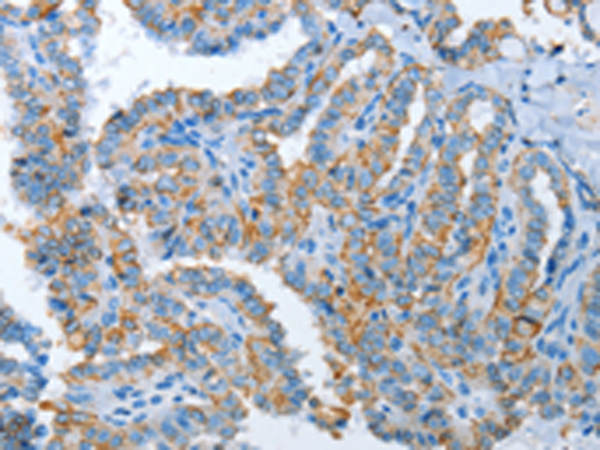

| WB | 咨询技术 | Human,Mouse,Rat |
| IF | 咨询技术 | Human,Mouse,Rat |
| IHC | 1/50-1/200 | Human,Mouse,Rat |
| ICC | 技术咨询 | Human,Mouse,Rat |
| FCM | 咨询技术 | Human,Mouse,Rat |
| Elisa | 1/2000-1/5000 | Human,Mouse,Rat |
| Aliases | ASAL |
| Host/Isotype | Rabbit IgG |
| Antibody Type | Primary antibody |
| Storage | Store at 4°C short term. Aliquot and store at -20°C long term. Avoid freeze/thaw cycles. |
| Species Reactivity | Human, Mouse, Rat |
| Immunogen | Fusion protein of human ASL |
| Formulation | Purified antibody in PBS with 0.05% sodium azide and 50% glycerol. |
+ +
以下是关于 **抗合成酶抗体(Anti-Synthetase Antibodies, ASAs)** 的3篇代表性文献(注:ASL可能为术语混淆,抗合成酶抗体更常见于抗ARS抗体家族,如抗Jo-1、PL-7等,此处基于临床相关性选择文献):
---
1. **文献名称**: *"Anti-synthetase syndrome: A closer look at an evolving spectrum of autoimmune myopathies"*
**作者**: Aggarwal R, et al.
**摘要**: 综述抗合成酶综合征(ASS)的临床特征,重点讨论抗Jo-1、PL-7、PL-12等抗体的诊断意义,及其与间质性肺病、肌炎和关节炎的关联性,强调抗体亚型对预后的影响。
---
2. **文献名称**: *"Myositis-specific autoantibodies: biomarkers for idiopathic inflammatory myopathies"*
**作者**: Oddis CV, et al.
**摘要**: 分析多种肌炎特异性抗体(包括抗合成酶抗体)在特发性炎性肌病中的诊断价值,探讨ASL抗体(若存在)与其他抗体的临床表型差异,以及其在指导治疗中的作用。
---
3. **文献名称**: *"The heterogeneity of interstitial lung disease in anti-synthetase syndrome"*
**作者**: Marie I, et al.
**摘要**: 研究抗合成酶抗体阳性患者中间质性肺病(ILD)的异质性,发现不同抗体亚型(如抗Jo-1 vs. 抗PL-12)与ILD严重程度及影像学特征的关联,提示抗体检测对分层管理的意义。
---
**注**:若您特指 **ASL抗体(如抗精氨酸琥珀酸裂解酶抗体)**,目前研究较少,可能与特定代谢性疾病或罕见自身免疫病相关,建议进一步确认术语准确性。
Argininosuccinate lyase (ASL) is a key enzyme in the urea cycle, responsible for catalyzing the breakdown of argininosuccinate into arginine and fumarate, essential for detoxifying ammonia and synthesizing nitric oxide. ASL deficiency, an autosomal recessive disorder, disrupts the urea cycle, leading to argininosuccinic aciduria (ASA), characterized by hyperammonemia, neurodevelopmental impairments, and multi-organ complications.
ASL antibodies are primarily used in diagnostic and research contexts. In clinical settings, they help detect ASL protein levels via immunoassays (e.g., Western blot, ELISA) to confirm ASA diagnosis, often complementing genetic testing. These antibodies are also critical in prenatal screening and carrier testing. In research, they aid in studying ASL expression, enzyme function, and pathophysiology of urea cycle disorders.
Recent studies explore ASL's role beyond ammonia metabolism, including its involvement in nitric oxide production and cellular signaling, broadening its relevance in cardiovascular and immune regulation. Therapeutic strategies, such as gene therapy or enzyme replacement, often rely on ASL antibodies to evaluate efficacy in preclinical models.
Overall, ASL antibodies serve as vital tools for understanding and managing a rare but impactful metabolic disorder, bridging diagnostics, research, and emerging therapies.
×